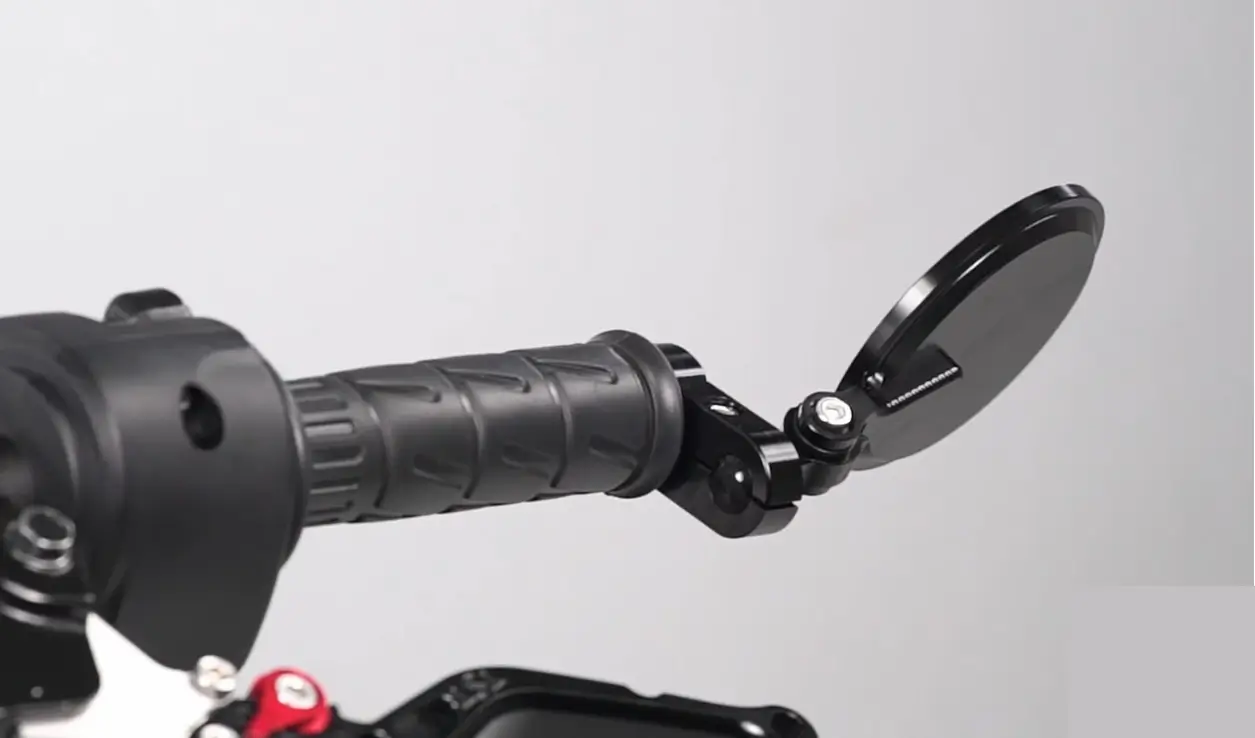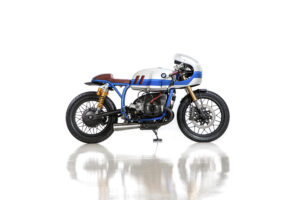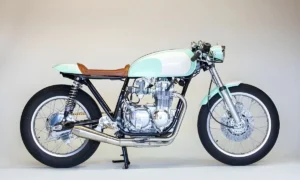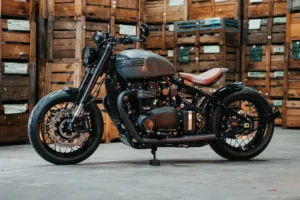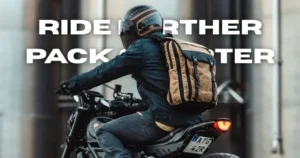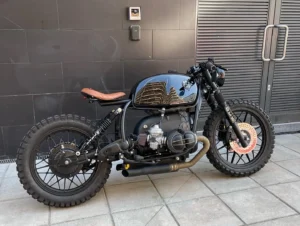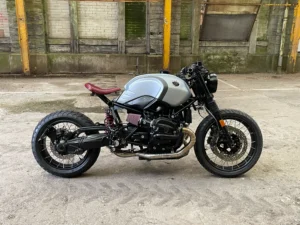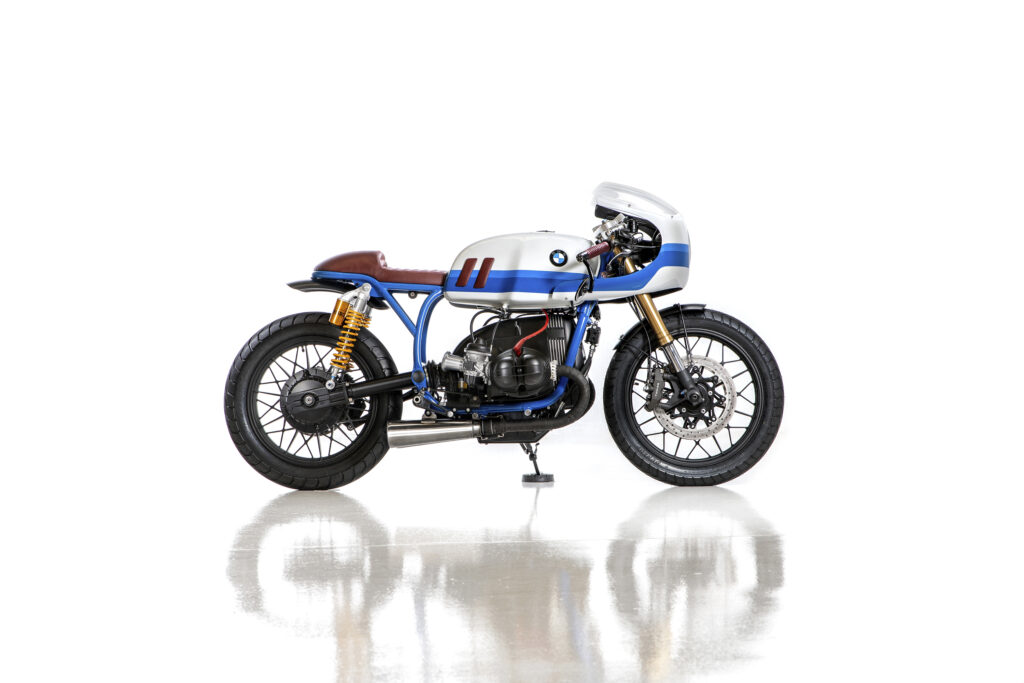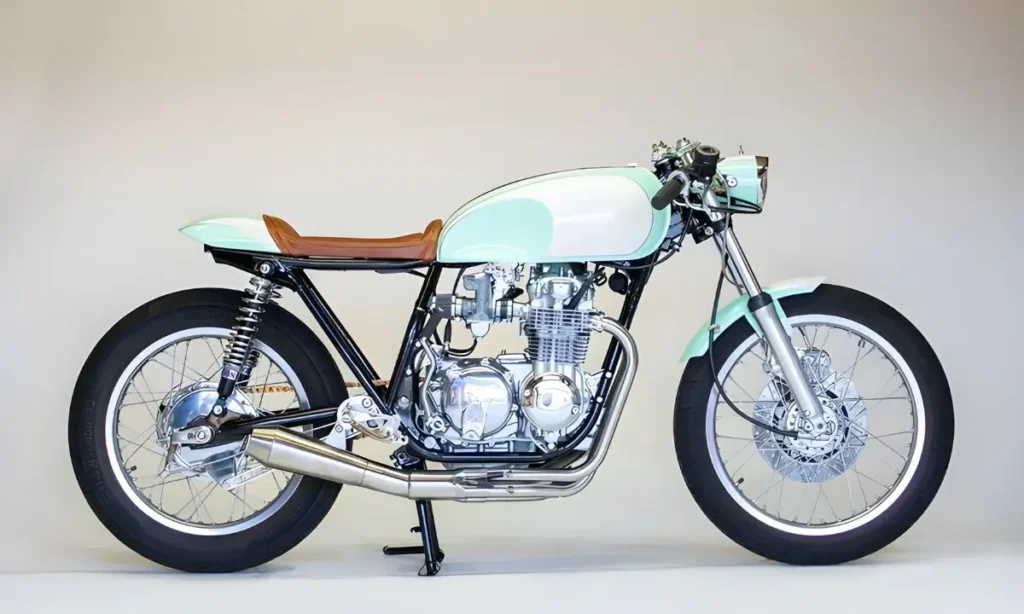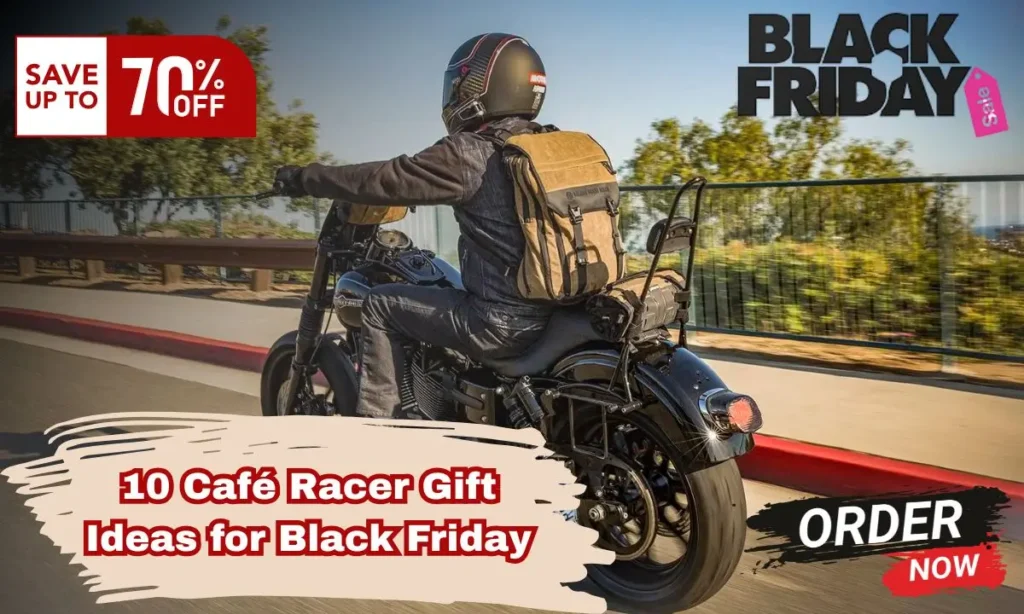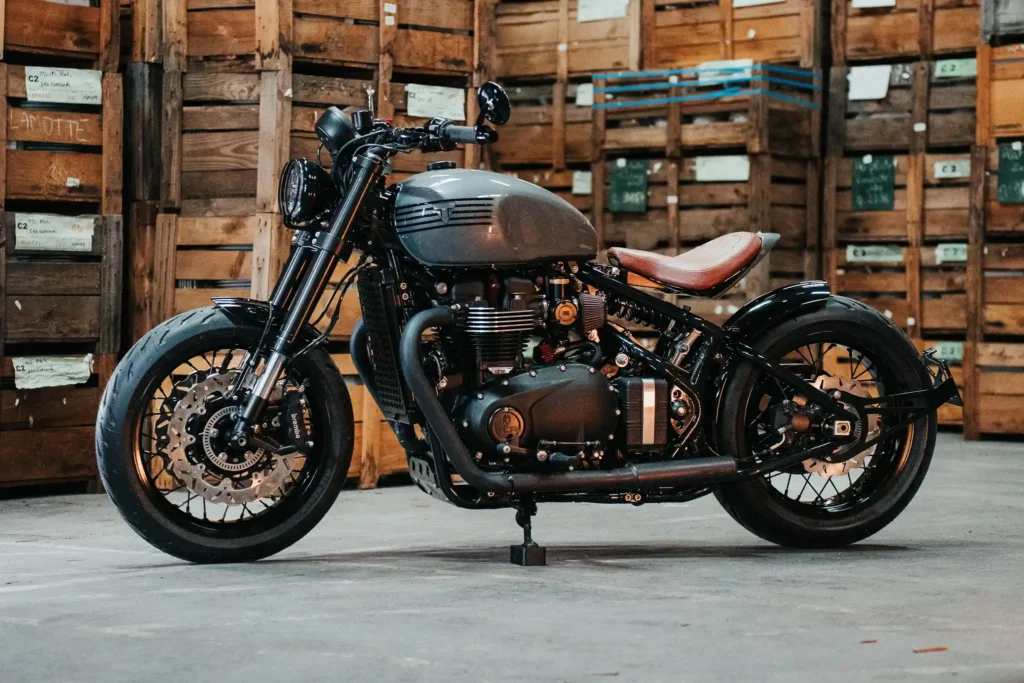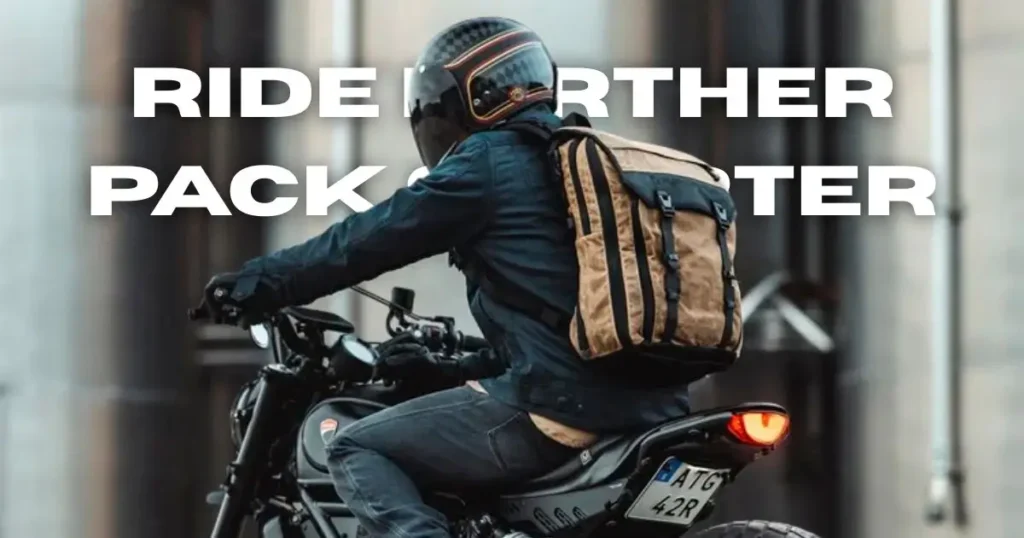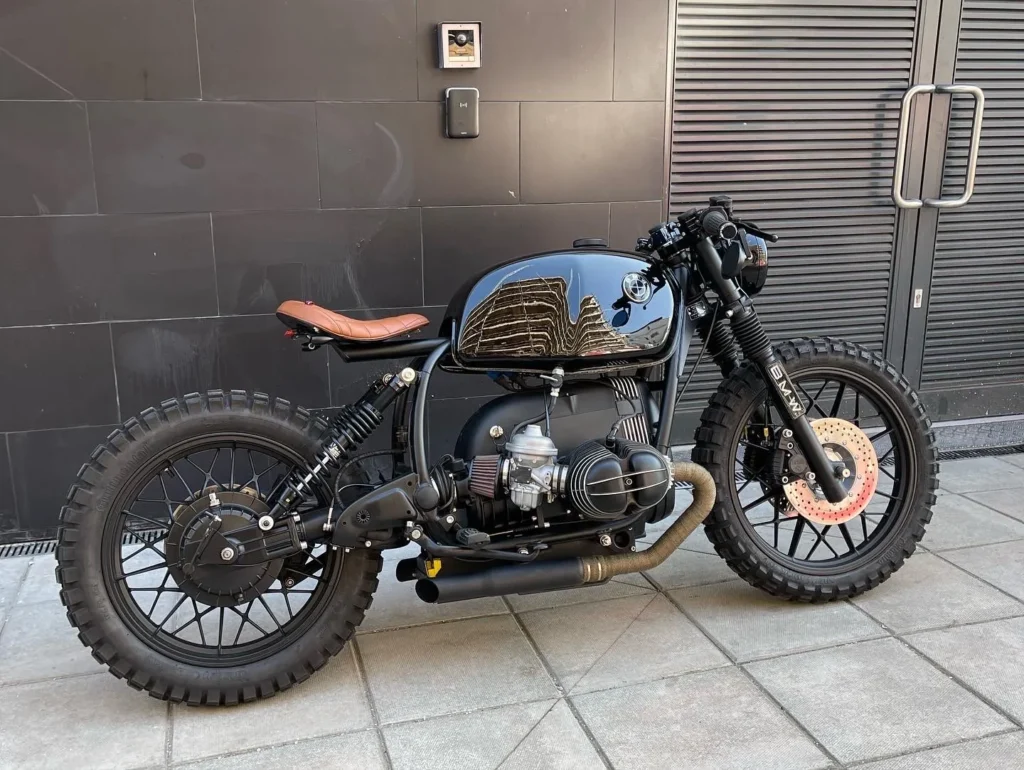Table of Contents
ToggleBar end mirrors are a common upgrade for cafe racer motorcycles. They improve rear visibility and give the bike a cleaner, more classic look. Place the mirrors at the end of the handlebars to see more of the road behind and keep the front of your bike clear. This setup reduces blind spots and helps you stay focused while riding.
This guide shows how to install bar end mirrors with simple tools and clear steps. You will learn how to check your handlebar type, pick the right mirror style, and mount each one correctly. The instructions are direct and easy to follow. You will also get tips for adjustment, safety checks, and long-term care. Follow each step to install your mirrors with confidence.
What Are Bar End Mirrors?
Bar end mirrors are side mirrors that mount at the end of a motorcycle’s handlebars. They are different from standard mirrors, which usually attach above the controls. These mirrors offer a wider view of the road behind the rider. That helps with safety, especially in traffic or at high speed. They also reduce blind spots better than many factory mirrors.
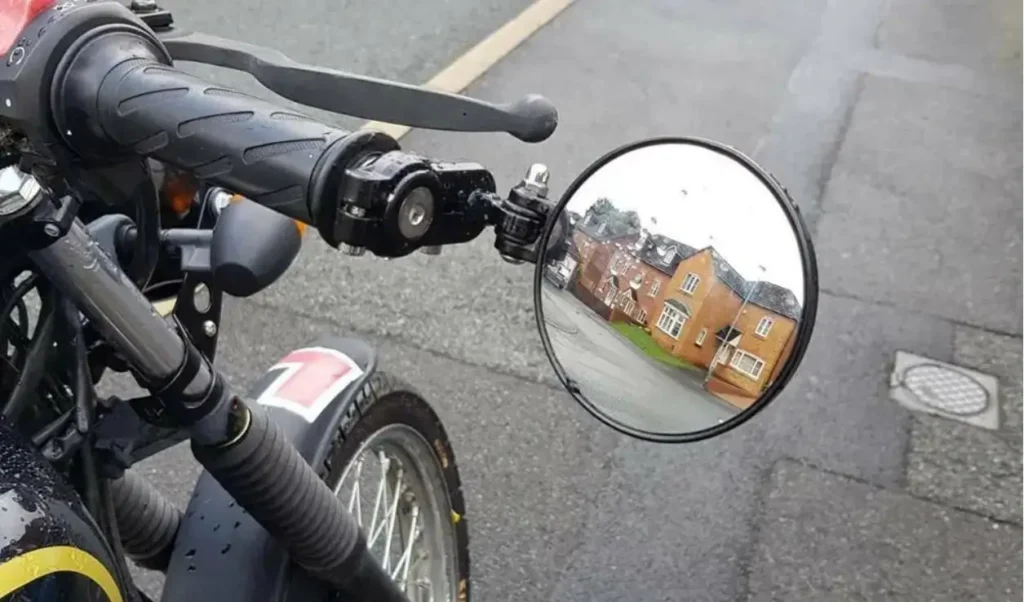
Cafe racers use bar end mirrors for both looks and function. They give a low, clean look that fits the classic cafe racer style. Many riders choose them to improve visibility without adding bulky parts to the front of the bike.
They come in various sizes and shapes. Most are round or oval. Some fold inward for parking or storage. Each design works to keep the rider more aware of the road behind.
What Tools You Need to Install Bar End Mirrors on Cafe Racer Handlebars?
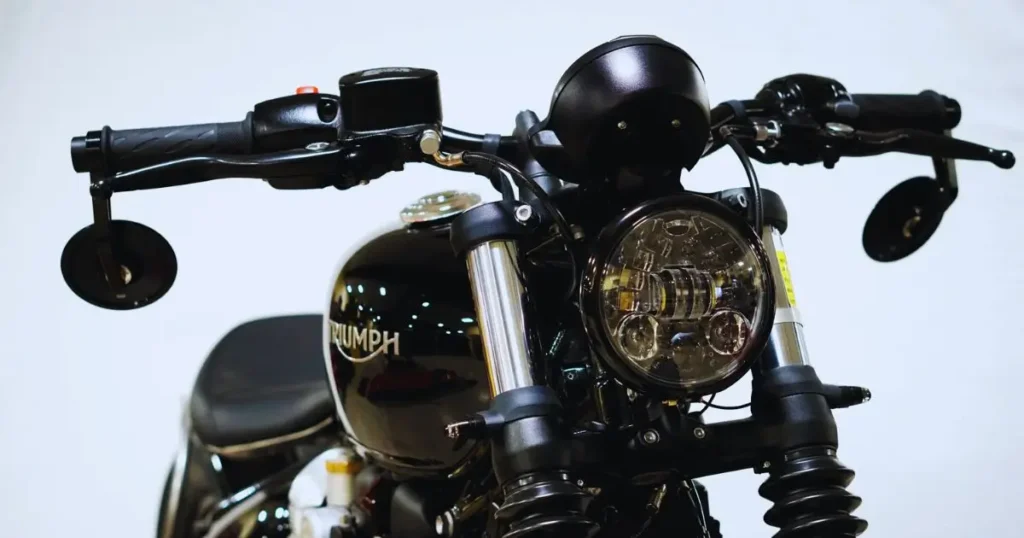
Essential Tools You’ll Need
To install bar end mirrors, gather all tools before you begin. You will need a hex key or Allen wrench, depending on your mirror bolts. A flathead screwdriver helps remove bar plugs or end caps. If your handlebars are closed, a utility knife may be required to cut the grip ends. Use a torque wrench to tighten bolts to the correct level. Having a soft cloth nearby is helpful to protect your mirrors during handling.
How to Check If Your Handlebars Are Compatible?
Check if your handlebars are hollow. Most bar end mirrors need space inside the handlebar tube. Remove the existing bar ends or grips and look inside. If the bar is solid, expansion-type mirrors will not fit. In this case, you may need clamp-on mirrors or a handlebar adapter. Steel and aluminum bars work best. Avoid mirrors on handlebars that have wiring inside the ends.
Prepping Your Bike: Removing Bar Ends or Grips Safely
Turn off your motorcycle and place it on a stable stand. Remove the bar ends by unscrewing them with the right tool. If your grips cover the ends, carefully trim the tips with a sharp blade. Do not cut too deep. Slide the grip back or remove it fully. Clean the inside of the handlebar with a dry cloth to remove dust or rust. This ensures a tight fit for the mirrors during installation.
How to Install Bar End Mirrors on Cafe Racer Handlebars (Step-by-Step)
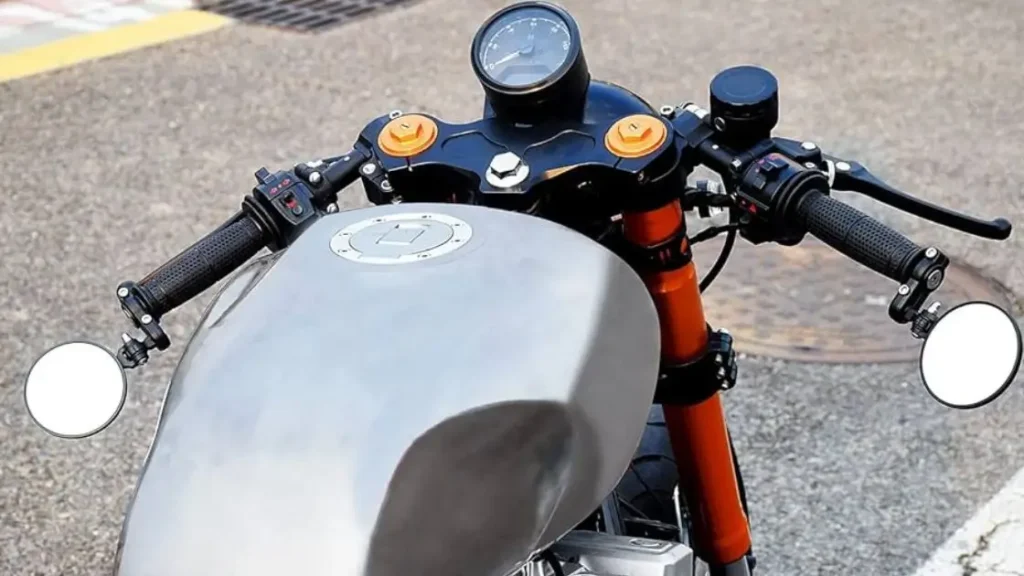
Installing Clamp-On Style Mirrors
Clamp-on mirrors attach directly to the outside edge of the handlebar. First, slide the clamp section over the bar end. Align the mirror so it points slightly outward and downward. Hold it in position and tighten the clamp bolt using the correct hex key. Make sure the mirror does not move when you apply light pressure. If it shifts, check the fit and tighten again.
Installing Expansion Bolt Style Mirrors
Expansion bolt mirrors go inside hollow handlebars. Insert the mirror stem into the bar until the base sits flush. Turn the bolt with an Allen wrench. This expands the inner section, locking it inside the bar. Keep turning until the mirror feels secure. Do not overtighten. Check that the mirror stays in place when you move the handlebar left and right.
Installing Internal Insert Type Mirrors
Some mirrors use a fixed insert that slides into the handlebar. First, remove the grip or end cap. Insert the mounting piece deep into the handlebar. Align the mirror stem before tightening. Use a torque wrench if possible. This helps you apply the right pressure. Once tight, the mirror should not wiggle or spin. Recheck the grip position and reinstall if needed.
How to Adjust Bar End Mirrors for Best Visibility?
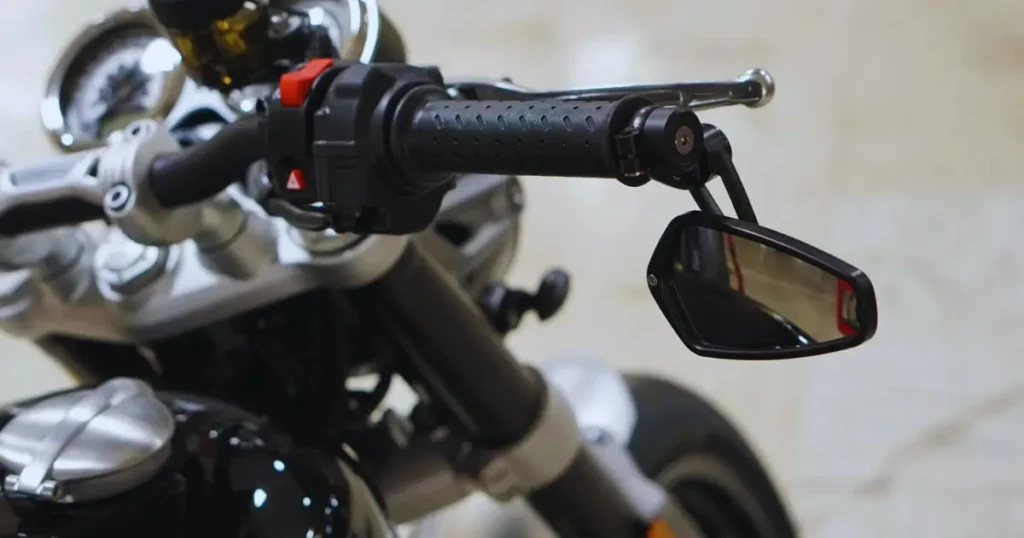
Setting the Correct Viewing Angle
After installation, sit on your motorcycle in your normal riding position. Adjust each mirror so you can see behind you without moving your head. The mirror should show part of your shoulder and the lane next to you. This balance improves safety and gives a better view of traffic. Make small adjustments until the rear view is wide and clear.
Aligning Left and Right Mirrors Evenly
Check both mirrors from the seated position. They should match in height and angle. If one mirror is lower or pointing differently, adjust it by loosening the bolt slightly and moving it by hand. Then tighten it again. Even alignment keeps the bike balanced and the view equal on both sides.
Testing Mirror Stability After First Ride
Take a short test ride. Pay attention to the mirrors. If they shake or move while riding, stop and recheck the bolts. Use a tool to make them tighter if needed. Soft mirror movement can happen after the first use. Fixing it early prevents bigger problems later. Always check the fit after your first ride with new mirrors.
How to Improve Bar End Mirror Stability and Road Safety?
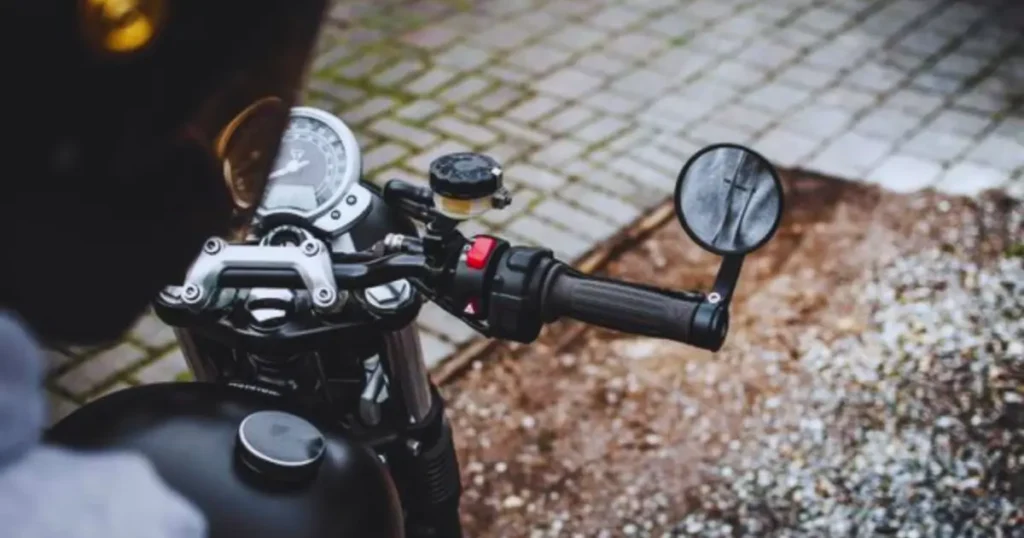
How to Minimize Mirror Vibration
Mirror vibration reduces visibility. To prevent this, check that all bolts are tight. Use a torque wrench if available. Rubber washers between the mirror and handlebar can help absorb small shakes. Make sure your grips are not pushing against the mirror base. Check tire pressure and suspension. Poor road contact also causes vibration during rides.
Ensuring Clear Rear Visibility in Real-World Conditions
Adjust mirrors during daylight and test them in traffic. Ride on both city and highway roads. If you see more of your arm than the road, move the mirror outward slightly. Avoid placing the mirror too far, as it may hit other vehicles. Try different angles until the reflection is stable and wide. Nighttime reflections should be clear without glare. Clean mirrors before each ride to remove dust.
Rechecking Tightness After Initial Use
After your first ride, inspect each mirror. Use your hand to check for looseness. Re-tighten the bolts with a tool, not by hand alone. Some mirrors may shift after the first few rides. Rechecking ensures they stay in place long-term. Make it a habit to inspect mirrors once every week. This keeps your bike safe and mirrors effective.
Common Bar End Mirror Issues and How to Fix Them
Mirrors Keep Coming Loose – What to Do
If your mirrors move during rides, the bolts may not be tight enough. Use the correct tool to tighten them firmly. Check if the mirror base is sitting flat against the handlebar. If it tilts, remove and refit the mirror. Add thread locker if the bolt continues to slip. This helps prevent movement from road vibration.
Mirrors Show Blurred or Shaky Image
Blurry reflections usually come from vibration. First, check the mirror arm. It should not shake when the engine runs. If it does, add rubber spacers or change to a more stable design. Make sure the mirror stem is solid. If the stem is thin or loose, it will shake more at higher speeds. Some cheaper mirrors may not perform well at highway speeds.
Handlebar Fitment Issues and Fixes
Not all handlebars work with all bar end mirrors. If your handlebar has a solid core, expansion mirrors will not fit. In this case, use clamp-on types. If the inside diameter is too large or too small, use a proper insert or adapter. Always measure the inner width of your handlebar before buying mirrors. This avoids fitting problems later.
How to Maintain Bar End Mirrors for Long-Term Use?
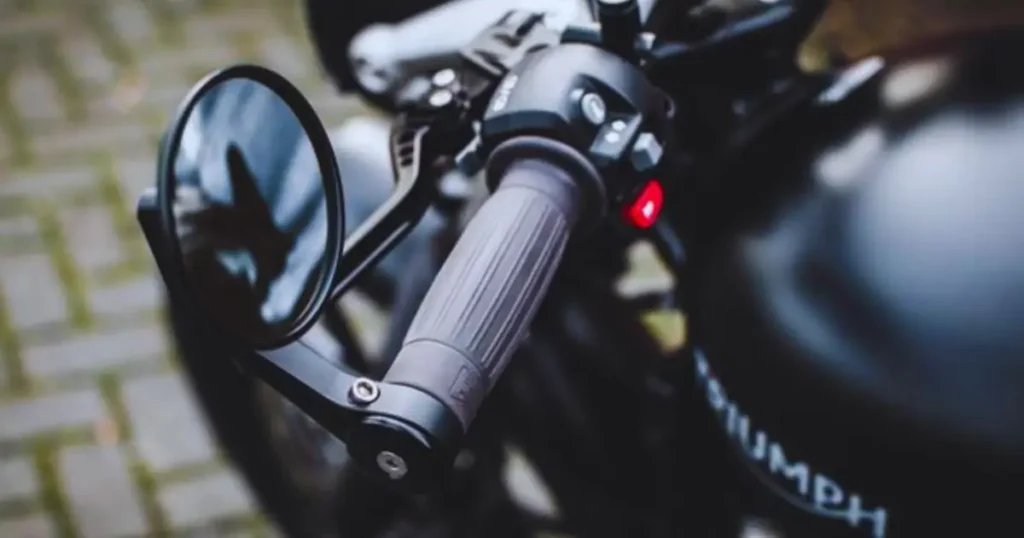
How Often to Re-Tighten Bolts
Bar end mirrors can loosen over time due to road use. Check the bolts once a week or after every long ride. Use a tool, not your fingers, to test the tightness. Re-tighten only if needed. Do not over-tighten, as this can damage the mirror or handlebar.
Cleaning the Mirrors Without Scratching
Use a soft microfiber cloth to wipe the mirror surface. Avoid rough cloths or paper towels. Spray a small amount of water or mild glass cleaner. Do not use strong chemicals. Clean gently in circles to avoid marks. Keep the edges clean to prevent buildup over time.
When to Replace Mirror Components
If the mirror stem bends, the glass cracks, or the bolts wear out, consider replacing that part. Do not ride with a broken mirror. Check for rust or corrosion around the base. If the mirror no longer stays in place, it may need full replacement. Choose quality parts to reduce the need for frequent changes.
FAQs
Can I install bar end mirrors on any motorcycle?
Most motorcycles with hollow handlebars can support bar end mirrors. However, if your handlebar ends are solid or have wiring inside, you may need special adapters or choose clamp-on models. Always check the bar design before buying mirrors.
Will bar end mirrors affect my handlebar width?
Yes. Bar end mirrors add a small amount of extra width to each side. The increase depends on the mirror size and design. Foldable mirrors reduce this space when parking or storing the bike.
Are bar end mirrors legal in my country or state?
Mirror laws differ by region. Some places require two mirrors. Others allow one, as long as it shows a clear view behind. Check your local road laws before removing stock mirrors. Use approved products to stay within rules.
Do I need to modify my grips or throttle tube?
If your grips cover the handlebar ends, you will need to trim or remove them. Rubber grips are easy to cut. For throttle tubes, use care. Some tubes need a special cut to avoid damage. Follow the mirror brand’s instructions.
What’s the best angle for city vs highway riding?
In city riding, adjust mirrors slightly wider to see cars next to you. On highways, angle them to cover more of the rear lane. Always test the angle in real conditions. Adjust until the view is clear and stable.
Disclaimer
This guide is based on hands-on experience and general knowledge of motorcycle maintenance and customization. Every effort has been made to ensure the instructions are accurate, safe, and easy to follow. However, motorcycles may vary in design, build quality, and compatibility.
The author and publisher are not responsible for any damage, injury, or mechanical issues that may result from following this guide. Always check your motorcycle’s specifications and consult a professional mechanic if you are unsure about any step. Use proper tools and follow safety practices when working on your bike. All actions are taken at your own risk.

